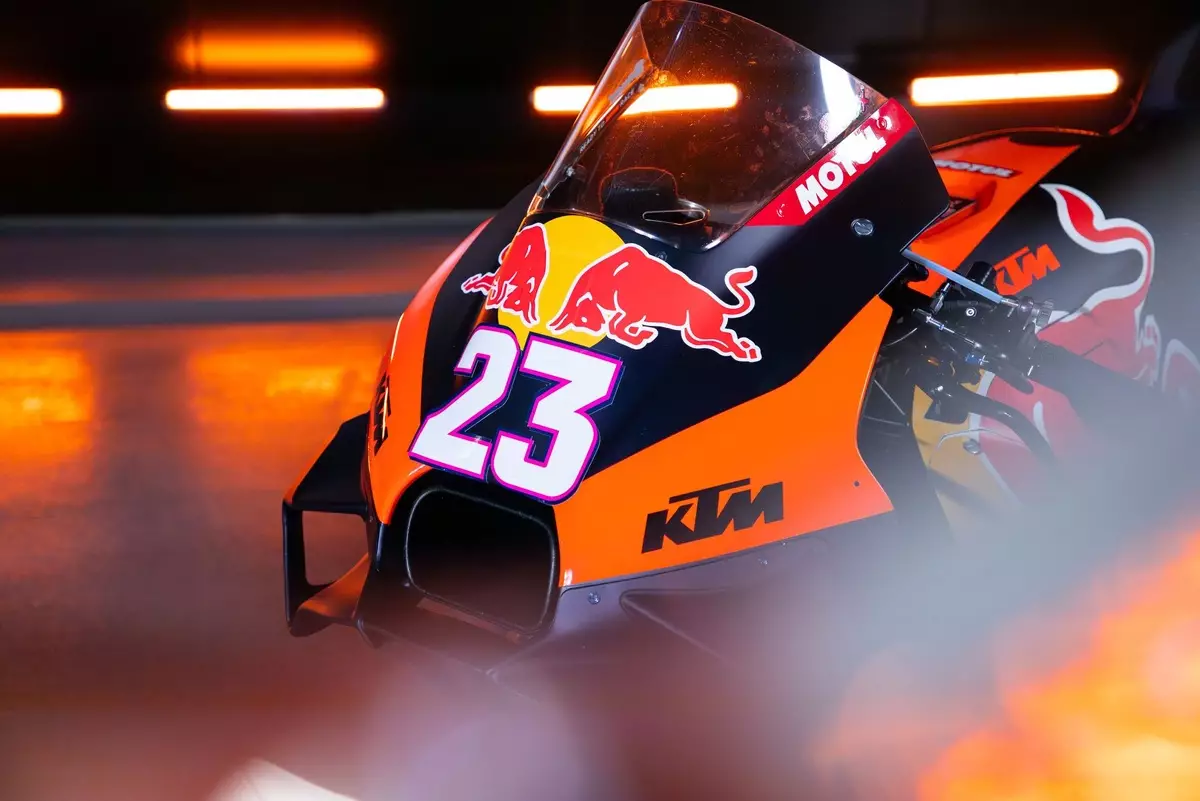KTM, a prominent name in the world of motorcycle racing, recently unveiled its 2025 MotoGP bike amidst significant financial challenges. This move, while strategically vital for the company, underscores the precarious balance between ambition and practicality in motorsport. As KTM readies itself for the upcoming season, questions regarding its financial stability and commitment to MotoGP linger in the background.
At the recent launch event for the RC16, an air of optimism was present as KTM displayed four identical motorcycles alongside its satellite team, Tech3. However, the most pressing issue — the company’s escalating financial difficulties — was notably absent from conversation. Sources indicate that KTM is grappling with debts totaling €2.2 billion, with creditors scheduled to vote on a resolution for its insolvency plan soon. The silence from KTM’s management regarding their fiscal state appears both deliberate and reflective of a desire to deflect attention from what could be seen as a crisis.
KTM’s struggle is doubly complicated by external pressures. Creditors are reportedly urging the company to withdraw from MotoGP altogether, citing that reducing expenditure would position KTM in a more favorable financial landscape. Still, Pit Beirer, the KTM Motorsport Director, asserted that the brand remains deeply committed to its racing presence. His statements highlight a critical disconnect within the organization: the lofty goals of success in MotoGP versus the potentially debilitating financial ramifications of continued participation in the sport.
Despite the evident financial restraints, KTM has positioned itself at the forefront of competitive motorcycle racing. Beirer’s commentary accentuates a longstanding identity tied to competition and success. The MotoGP team is gearing up for what they describe as a “massive” season, buoyed by recent accolades such as victories in the Dakar Rally and AMA Supercross. This recent success fosters a sense of optimism and serves as a rallying cry for both the teams and their enthusiasts.
Moreover, the new team manager, Aki Ajo, emphasized progress in the development of the RC16, hinting at a transformation of the satellite team’s role to that of a second factory team. Ajo’s confidence can be understood as both a motivational tactic and a potential indicator of internal morale despite the precarious financial landscape. The dialogue surrounding future improvements and performance enhancements speaks to the heart of motorsport culture: the relentless pursuit of excellence and the dedication of a team that thrives on adrenaline and competition.
Integral to KTM’s outlook are its talented riders — Brad Binder, Pedro Acosta, Enea Bastianini, and Maverick Viñales. These individuals carry significant expectations as they represent the colors of a brand striving to reinforce its identity amid external pressures. The synergy among experienced riders, combined with the expertise of the technical team, is a crucial factor in KTM’s strategy to ensure competitive performance in 2025.
While acknowledging the financial constraints, the focus on advancing the RC16’s performance reflects an assertion that racing and development go hand in hand. Without a doubt, the enthusiasm surrounding the new riders and technical enhancements could yield critical advantages on the racetrack, potentially mitigating some of the financial concerns through increased sponsorship and audience engagement.
Looking ahead, the 2025 MotoGP season represents a battleground not only for races but also for KTM’s identity in the face of adversity. While optimism is palpable in the paddock, the financial specter looms large, serving as a reminder that motorsport is not just about speed and skill but also about sound management and strategy.
Ultimately, KTM’s narrative is a compelling illustration of the highs and lows that come with competing in a global arena. The dedication to racing remains central to its brand ethos, but it also raises pivotal questions about sustainability and long-term viability. As the season progresses, the unfolding of these themes will captivate fans and analysts alike, as they watch to see whether KTM can navigate this precarious moment while pursuing excellence on the racetrack. The intersection of ambition, strategy, and financial prudence will be the lens through which this season will be viewed, and only time will reveal the outcome of this exhilarating yet daunting endeavor.


Leave a Reply